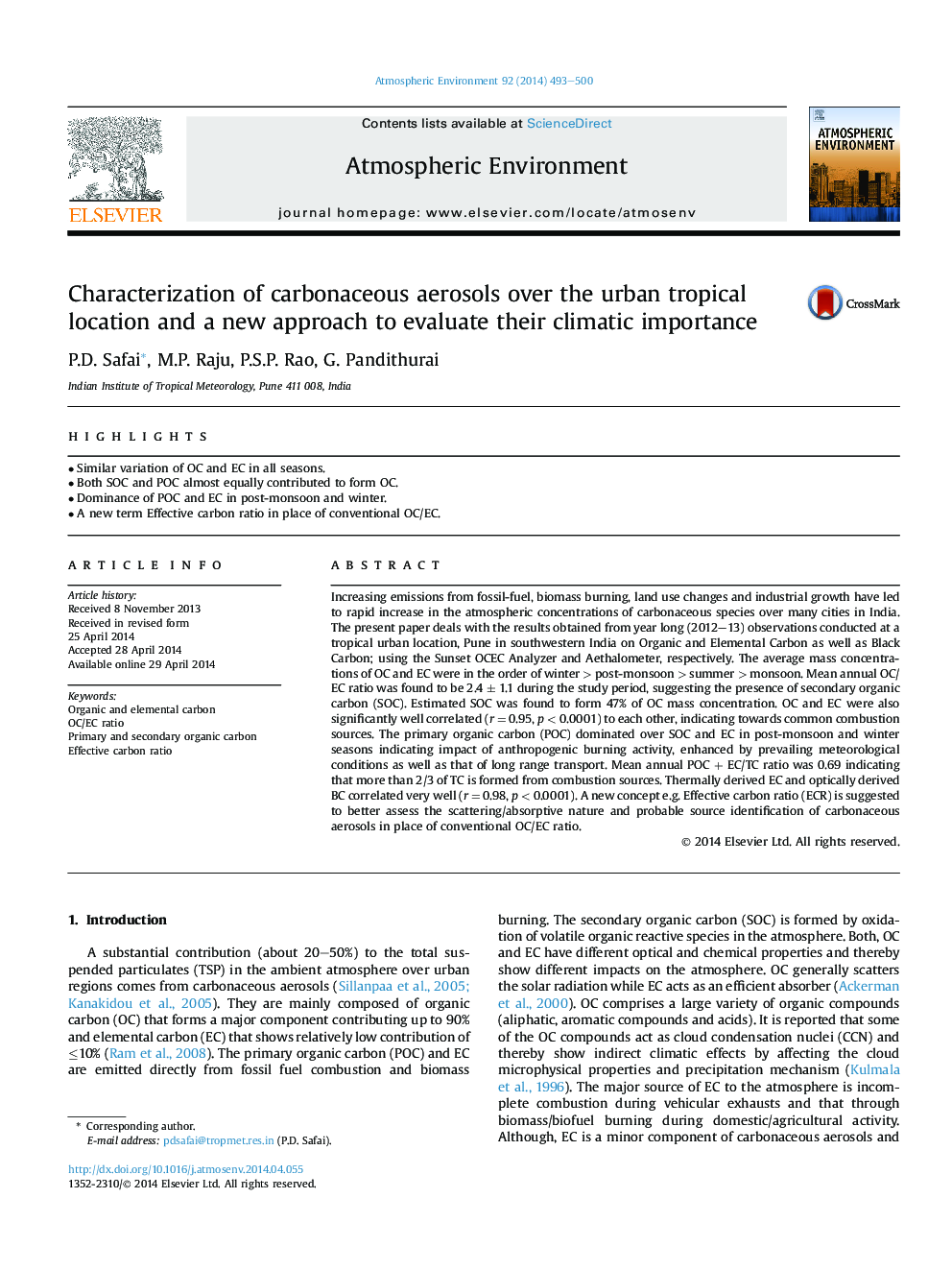| Article ID | Journal | Published Year | Pages | File Type |
|---|---|---|---|---|
| 6339417 | Atmospheric Environment | 2014 | 8 Pages |
â¢Similar variation of OC and EC in all seasons.â¢Both SOC and POC almost equally contributed to form OC.â¢Dominance of POC and EC in post-monsoon and winter.â¢A new term Effective carbon ratio in place of conventional OC/EC.
Increasing emissions from fossil-fuel, biomass burning, land use changes and industrial growth have led to rapid increase in the atmospheric concentrations of carbonaceous species over many cities in India. The present paper deals with the results obtained from year long (2012-13) observations conducted at a tropical urban location, Pune in southwestern India on Organic and Elemental Carbon as well as Black Carbon; using the Sunset OCEC Analyzer and Aethalometer, respectively. The average mass concentrations of OC and EC were in the order of winter > post-monsoon > summer > monsoon. Mean annual OC/EC ratio was found to be 2.4 ± 1.1 during the study period, suggesting the presence of secondary organic carbon (SOC). Estimated SOC was found to form 47% of OC mass concentration. OC and EC were also significantly well correlated (r = 0.95, p < 0.0001) to each other, indicating towards common combustion sources. The primary organic carbon (POC) dominated over SOC and EC in post-monsoon and winter seasons indicating impact of anthropogenic burning activity, enhanced by prevailing meteorological conditions as well as that of long range transport. Mean annual POC + EC/TC ratio was 0.69 indicating that more than 2/3 of TC is formed from combustion sources. Thermally derived EC and optically derived BC correlated very well (r = 0.98, p < 0.0001). A new concept e.g. Effective carbon ratio (ECR) is suggested to better assess the scattering/absorptive nature and probable source identification of carbonaceous aerosols in place of conventional OC/EC ratio.
